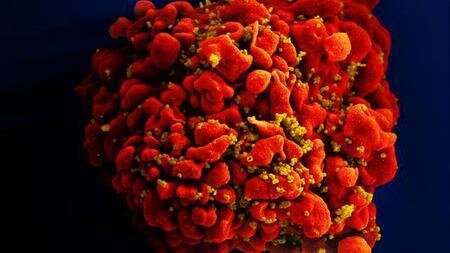Critical window for re-infection with HIV after stem cell transplantation

Some people with HIV need to undergo an allogeneic stem cell transplantation in order to treat different types of blood cancer. Most of the patient’s immune cells are eliminated during these transplantations. Stem cells from a healthy donor are then used to replace the patient’s damaged bone marrow and restore their immune system.
“In the first weeks after an allogeneic stem cell transplantation, during which the donor´s cells and the patient´s cells still exist together, the CD4+ T cells (helper cells) were strongly activated. This activation could promote reactivation of the HI virus and re-seeding of the infection in expanding CD4+ donor T-cells,” according to the study’s first author, Dr. Johanna Eberhard from the UKE.
In cooperation with researchers from the Pasteur Institute, Dr. Eberhard found that new, specific T-cell responses to HIV proteins from donor cells developed after this time. This indicates that the donor cells were in contact with HI viruses during their expansion and had learnt to react against them. This confirms the existence of a “window of vulnerability” during which infection of donor cells can occur, said Dr. Eberhard.
Source: Read Full Article


